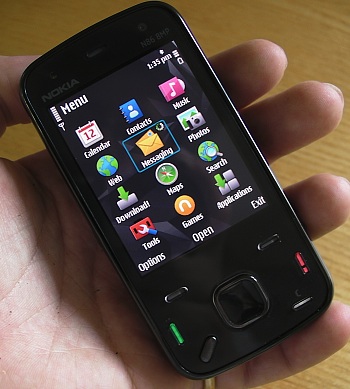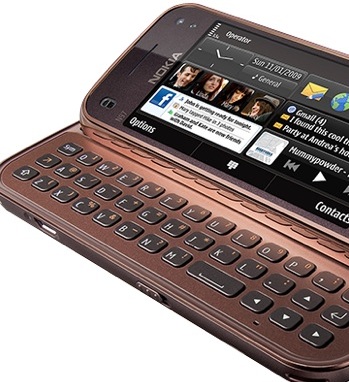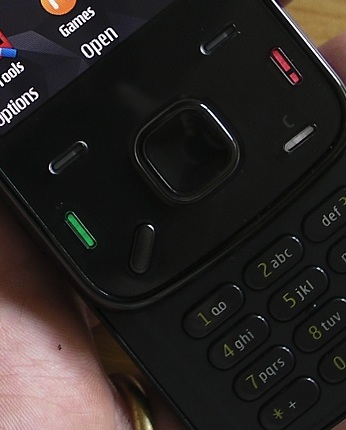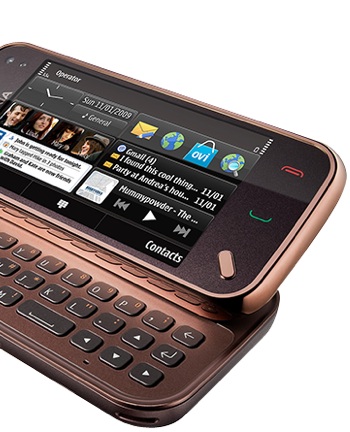Just like the rest of the AAS readership, I've been having my own hardware dilemmas. I'm not blind and I can read the tea leaves, spot the signs in the sky, test the wind of change, and so on. There's an industry wide trend towards large, media-friendly touchscreens, driven by the excitement around the Apple iPhone. Yes, yes, Windows Mobile and Symbian (in the Nokia 7710) had large touchscreens first, by several years, but you can't argue with the fact that Apple popularised the concept and made it practical for the mainstream.
Is the trend simply manufacturers falling over themselves to copy the iPhone? Partly yes, it has to be said, but there's also the matter of consumer expectations. It's nearly 2010 and the buyer of an expensive 'phone' expects to be able to watch YouTube videos on it, to play movie trailers, to watch BBC iPlayer TV programmes. They also expect it to show off their best photos to family and friends. They also expect to be able to see web sites more or less as they see them on a desktop screen - and not just as a page overview, but as a readable image. Finally, there's the revolution in touch that was using a transflective capacitive screen (on the iPhone), meaning that touchscreens were no longer relegated to geeks with styluses in dark rooms - now real people could take touchscreen phones out into the (sunny) world and be able to see what they were dragging around and tapping on with their fingers.
Of course, not every manufacturer appreciated this last point fully, leading to plenty of resistive-touchscreened bare TFT phones which required a firm press to operate and which couldn't be used outdoors in bright light. Fail. In the comparison below, I'm going to be using the Nokia N97 mini, which uses resistive touch and a transflective layer behind its screen, giving it 'good enough' visibility outdoors, even if it's not in the iPhone's league (the resistive layer damages contrast).
The final expectation from modern users seems to be that there'll be a faster, easier way of entering text than using a T9-style numeric keypad. It's not all sweetness and light in touchscreen land, of course, as I was reading yesterday, with many people dissatisfied at interacting with a phone sans buttons, but there is a definite trend towards virtual (or actual) qwerty input.
So, my question is: where does this leave the current hardware in the Symbian OS world? The current S60 3rd Edition flagship, with traditional phone form factor, is the Nokia N86 8MP - it's certainly a very attractive phone that struggles in the midst of criticism that it's too 'old fashioned'. But in what ways has it been left behind by its S60 5th Edition equivalents?
In terms of size, build quality, aspirational qualities, capacity and price, the Nokia N97 mini would seem a good fit for the N86 8MP, so let's use these two devices and put them head-to-head:
| Nokia N86 8MP | Nokia N97 mini | |
 |
 |
|
| Form factor, build materials | Dual slider, with both numeric keypad and media control keys. Tempered glass front, metal chassis | Full face touchscreen with alloy pivoting mechanism revealing a qwerty keyboard and directional keys, metal backplate and detailing |
| Weight, dimensions | 149g, 103.4 x 51.4 x 16.5mm | 138g, 113 x 52.5 x 14.2mm |
| Screen tech | QVGA resolution, 2.6" diagonal, AMOLED (high brightness, glorious colours in most light conditions, low power consumption) | nHD resolution (640 x 360 pixels), 3.2" diagonal, transflective TFT, resistive touch layer |
| Text input | T9 or multi-tap using numeric keypad | QWERTY typing or on-screen T9/multitap using touchscreen or handwriting recognition (also using touchscreen) |
| Interface | One-handed, S60 3rd Edition | One-handed or two-handed, S60 5th Edition, with kinetic scrolling |
| Memory | 80MB free RAM after booting, 78MB user accessible flash memory on disk C:, 8GB mass memory, microSD expansion | 50MB free RAM after booting, 320MB user accessible flash memory on disk C:, 8GB mass memory, microSD expansion |
| Camera | 8 megapixel, Carl Zeiss lens, dual LED flash, variable aperture, VGA video recording at 30fps, excellent results for both. Video capture is pre-focussed at a couple of metres. Mechanical camera glass protection | 5 megapixel, Carl Zeiss lens, dual LED flash, VGA video recording at 30fps, very good results for stills, video limited by infinite focus |
| Music playback | 3.5mm jack, A2DP (Bluetooth stereo), (tinny) stereo speakers, FM transmitter | 3.5mm jack, A2DP (Bluetooth stereo), (tinny) stereo speakers |
| Navigation | GPS, Ovi Maps 3, Digital compass | GPS, Ovi Maps 3, Digital compass |
| Connectivity | Wi-Fi, tri-band 3G, quad-band GSM, UPnP, microUSB data and charging | Wi-Fi, tri-band 3G, quad-band GSM, UPnP, microUSB data and charging |
| Application oddities and compatibility | Extensive S60 3rd Edition software scene | No Internet Radio; steadily growing S60 5th Edition software scene with about 40% overlap with that from S60 3rd Edition |
| Battery specs, notes | 1200mAh, typical use between charges 2 days, quoted music playback time 25 hours | 1200mAh, typical use between charges 2 days, quoted music playback time 28 hours |
| Price (SIM-free, inc-VAT) | £390 | £400 |
 |
 |
Rather remarkably, or perhaps not, considering that both are roughly the same price and both are 2009 Nokia smartphones, the two devices, despite their differing form factors, interfaces and software platforms, are extremely well matched in most areas. At first sight, the N86 simply outguns the N97 mini, with its superior low-light-optimised camera, with better video capture, with its greater free RAM, with its OLED display and with its FM Transmitter. But the N97 variant fights back with a screen that's around 40% larger, with the interactivity that a touchscreen brings and with a very usable miniature QWERTY keyboard., all crucial to life in late 2009, seemingly.
Yes, the writing is on the wall and I expect more devices with the N97's (and the tablet X6's) dimensions and basic characteristics to appear from Nokia's design stable in the coming year. There's currently simply too much momentum behind touch interfaces and too much expectation in terms of large screen display of media and information. But I hope the above table has proved that the non-touch family tree can still punch its weight, at least if you factor out current fashion and subjective criticism.
Yes, the baton has already been passed from S60 3rd Edition to 5th Edition, just look at the devices which are appearing on Symbian now and look where the development money is being spent. But it will take quite a while for S60 3rd Edition to fade away and, with devices like the N86 around to impress, I for one am going to bear both in mind for personal use going into 2010.
Steve Litchfield, All About Symbian, 4 November 2009
PS. Can we please not let any comments descend into N86 or N97-bashing? And yes, some people have N86s with dodgy build quality - take them back! My N86 is built like a Sherman tank.
